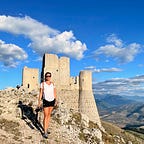5 Aspects of Aperture You Must Understand
Photography Beyond the Basics
Learning photography beyond point and shoot or automatic modes means learning how photography works. Aperture is one of the most important and nuanced elements of photography, both technically and creatively.
What Aperture Does
The aperture is a function of the lens. It controls how much light reaches the sensor how quickly. This part affects the exposure of scene — how light or dark a photo is. It’s indicated by f/stops.
A large number (like f/16) indicates a narrow/small physical aperture size. A small number (like f/2) indicates a large/wide physical aperture size. A narrow aperture lets in a small amount of light (like narrow spout) whereas a wide aperture lets in a large amount of light — like a fire hose.
Aperture and the Exposure Triangle
Aperture is part of the Exposure Triangle. This is a trio of settings that control the exposure and includes aperture, shutter speed, and ISO. Balancing these settings keeps the exposure correct — not too dark, not too light. Think of it as adding up to 100. As long as the 3 numbers total 100, the exposure will be correct.
Aperture and Depth of Field
While depth of field (how much of the image is in sharp focus) doesn’t relate directly to exposure, it is affected by the aperture setting. A wide aperture will have a shallow depth of field and a narrow aperture will have a deep depth of field. Shutter speed and ISO have no affect of depth of field.
Aperture and Lens Focal Length
While the other two exposure triangle elements do not affect depth of field, the focal length of the lens does. A wide angle lens (24mm for example) will have a greater depth of field at f/8 than a long lens (such as 200mm) at the same aperture setting.
Aperture and Focal Distance
Depth of field at a particular aperture is also affected by the focal distance. Meaning, how close the subject being focused on is to the camera. The closer to the camera the subject is, the shallower the depth of field at a given aperture.
Learning Advanced Photography Concepts
This is a broad overview of what aperture does in photography, both in terms of exposure and depth of field. Currently I am writing a multi-part series on my photography and travel site that explains all of this in depth.
Understanding aperture at a more advanced level is part of being able to take control of your photography. This will eventually allow you to confidently make choices about your settings and lens choices and create amazing photos with confidence and consistency.
If you would like to learn to travel independently with confidence or learn more about photography and travel photography, subscribe at Wanderstruck Ella to keep up.
